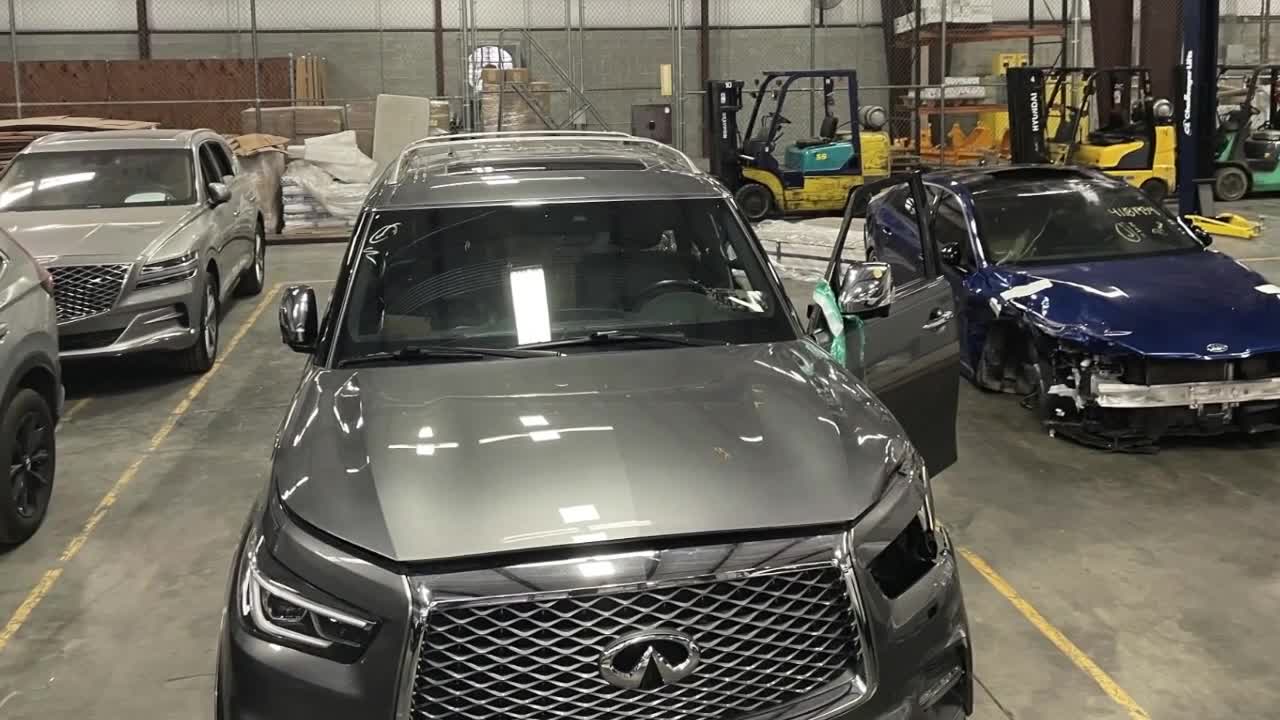BALTIMORE — Thieves are stealing cargo shipments with just a computer. Organized crime rings are increasingly targeting cargo shipments in a sophisticated form of theft that consumers rarely see but ultimately pay for.
"It happens behind closed doors. It happens in the dark of night, and the consumer doesn't really realize it, because it's not making national news," said Keith Lewis, Vice President of Operations for Verisk CargoNet.
Lewis's organization, which tracks cargo theft and works to prevent it, found cargo crimes increased 27 percent to an all-time high in 2024, with losses projected to rise another 22 percent in 2025. For the first time, the value of stolen merchandise and estimated loss exceeded $1 billion in 2023, with the average theft now valued at more than $202,000.
The types of targeted goods have shifted recently, according to experts.
"Energy drinks and solar panels — that's gone to the side now, and what we've seen the latest increase on is copper and general food and beverage and high-end technology is what's being stolen now," Lewis said.
The National Insurance Crime Bureau (NICB), which works on behalf of insurance companies, assists Customs and Border Protection in investigating these thefts and attempting to recover stolen goods. In a recent news release, the NICB said it has assisted in more than 240 cargo crime investigations, leading to over 70 recoveries valued at nearly $40 million. Since 2022, NICB has opened an average of 150 commercial cargo crime cases annually.
"Unscrupulous companies or individuals will take cargo containers, and then the people that are out there stealing, they bring them to a central location, near the port. They load the cargo containers there, and then they're picked up for shipping," said Bill Woolf, NICB's regional director in the Mid-Atlantic.
The organization provided photos taken at the Port of Baltimore showing high-end vehicles that were stolen, hidden within shipping containers, then falsely marked as household goods.
Robert Bornstein, program director at NICB, explained the broader implications: "Those profits are feeding these criminal enterprise just like a drug cartel uses illegal narcotics, these criminal enterprises to include some of the cartels are using cargo as their source of revenue."
What's particularly alarming is that these sophisticated crime rings don't need physical force to steal millions in merchandise.
"If you have a computer and you're savvy, tech savvy, you could actually physically arrange and deceive a supplier to release product to legitimate transporters because you then interact with the broker and deceive that broker and have those goods transported to a port such as the Port of Baltimore," Bornstein said.
Criminals exploit cargo delivery through identity theft, fraudulent pickups, posing as fictitious carriers, and cyber-enabled logistics manipulation. In Baltimore specifically, thieves have focused on stealing valuable metals like steel, nickel, cobalt, and tin. The average value of stolen shipments has increased to $312,000, according to CargoNet data.
Lewis warns these costs ultimately affect consumers: "No insurance company is going to just sit back and continue to pay claims, and no manufacturer is going to sit back and just absorb these losses. The losses get put back in the cost of goods, so we're paying for them at the point of sale."
Retailers and manufacturers are advocating for increased awareness of these crimes and the need for centralized reporting and data collection to better understand their frequency and perpetrators.
Currently, a bill in Congress — the Combating Organized Retail Crime Act (CORCA) — would impose harsher penalties for these crimes and establish a center to better coordinate federal law enforcement action. A committee hearing on this legislation was held in July.
If you suspect potential cargo theft, call local law enforcement, your insurance carrier, and NICB's hotline at 800-TEL-NICB.
This story was reported on-air by a journalist and has been converted to this platform with the assistance of AI. Our editorial team verifies all reporting on all platforms for fairness and accuracy.




